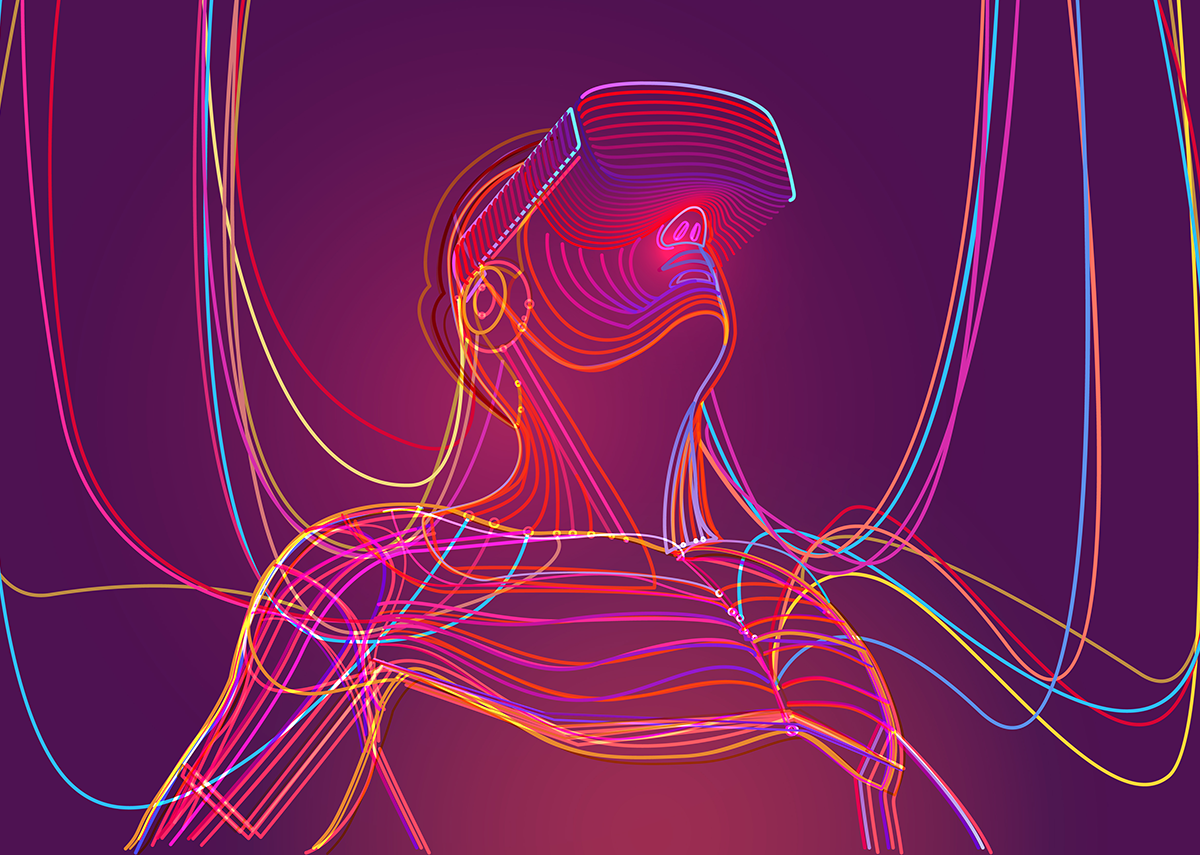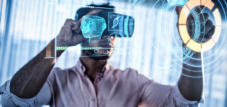What the Germans are doing in virtual reality
Around 17 percent of the population over the age of 16 use virtual reality glasses from time to time. Another 41 percent can imagine using this technology more frequently in the future. According to a study by Bitkom Research, the main area of use for VR glasses is currently computer and video games - around 77 percent of those surveyed said they use them for games. The second largest application area in 2021 is traveling to places virtually. Around 71 percent of those surveyed have already taken a “virtual vacation”. Compared to the previous year, this activity has increased by around 13 percentage points - the reason for this is certainly travel restrictions during the pandemic. VR glasses are also popular for watching films (56 percent), concerts (39 percent) and sporting events (20 percent). Around 37 percent of survey participants even use virtual reality for their workouts. VR users are less likely to have invested time in education or culture.
What Germans get up to in virtual reality
Around 17 Percent of the Population Over the Age of 16 Use Virtual Reality Glasses Now and then. Another 41 Percent Can Imagine Using This Technology More Frequently in the Future. According to a Study By Bitkom Research, The Main Area of Application for VR Glasses is Currently Computer and Video Games - Around 77 Percent of Responves Said They Them for Games. The Second Largest Area of Application in 2021 wants to virtual travel. Some 71 Percent of Respondens have already Taken a “Virtual Vacation”. Compared to the Previous Year, This Activity Has Increased by Around 13 Percentage Points - The Reason for This Is Certainly Travel Restrictions During the Pandemic. VR Glasses are therefore Popular for Watching Movies (56 Percent), Concerts (39 Percent) and Sporting Events (20 Percent). Some 37 Percent of Survey Participants Even Use Virtual Reality for their workouts. VR Users Are Less Likely to Invest Time in Education or Culture.
Extended reality (XR) is an umbrella term for all immersive technologies including augmented reality (AR), virtual reality (VR), and mixed reality (MR), plus those that are yet to be created. XR technologies extend the reality we experience by either merging the virtual and “real” worlds or by creating a fully immersive experience. The global XR market size is expected to be worth 31 billion US dollars in 2021, rising to close to 300 billion US dollars by 2024. On a regional level, South Korea, and China.
XR headsets and companies
VR creates an artificial environment, whereas AR simply makes use of the existing environment by overlaying new information on top of it. In both VR and AR, the information or imagery is typically made available to the user using a headset. XR headset vendors include Oculus, Sony, and HTC who offer VR devices, while Microsoft, Magic Leap, and Vuzix offer AR headsets and glasses. In addition to these firms, LG and Qualcomm rank as the leading owners of XR patents, with chipmaker Qualcomm joining forces with 15 telecommunications providers around the world to establish the Global XR Content Telco Alliance to develop 5G-based AR/VR content.
XR applications
Experts suggest that improvements to XR hardware, such as the introduction of smaller and more comfortable devices, coupled with developments in software applications and connectivity, will support the growing adoption of XR across a range of sectors. Healthcare, manufacturing, and the automotive industry are expected to be among the most disrupted by XR technologies. As the technology improves further, the use cases of XR will widen and strengthen, with the economic benefits of XR expected to be felt worldwide.
XR Technologies - Extended Reality - Augmented Reality (XR)
Extended reality (XR) is a generic term for all immersive technologies, including augmented reality (AR), Virtual Reality (VR) and Mixed Reality (MR), as well as for those that are still being developed. XR technologies expand the reality that we experience by either merging the virtual and the “real” world or creating a completely immersive experience. The global XR market is expected to have a value of $ 31 billion in 2021 and will increase to almost $ 300 billion by 2024. At the regional level, XR innovations are strongly represented in the United States and in the Asian-Pacific area, especially in Japan, South Korea and China.
XR headsets and companies
VR creates an artificial environment, while AR simply uses the existing environment by overlaying new information on top of it. With both VR and AR, the information or images are usually made available to the user via a headset. XR headset vendors include Oculus, Sony and HTC, which offer VR devices, while Microsoft, Magic Leap and Vuzix offer AR headsets and glasses. In addition to these companies, LG and Qualcomm are the leading holders of XR patents. Chipmaker Qualcomm has joined forces with 15 telecommunications providers from around the world to form the Global XR Content Telco Alliance and develop 5G-based AR/VR content.
XR applications
Experts believe that improvements in XR hardware, such as B. the introduction of smaller and more convenient devices, together with developments in software applications and connectivity, will support the increasing adoption of XR across a range of sectors. Healthcare, manufacturing and automotive are expected to be among the industries most impacted by XR technologies. As the technology continues to improve, the use cases of XR will expand and strengthen, with the economic benefits of XR expected to be felt worldwide.
Xpert.Digital – Konrad Wolfenstein
Xpert.Digital is a hub for industry with a focus on digitalization, mechanical engineering, logistics/intralogistics and photovoltaics.
With our 360° business development solution, we support well-known companies from new business to after sales.
Market intelligence, smarketing, marketing automation, content development, PR, mail campaigns, personalized social media and lead nurturing are part of our digital tools.
You can find out more at: www.xpert.digital – www.xpert.solar – www.xpert.plus


